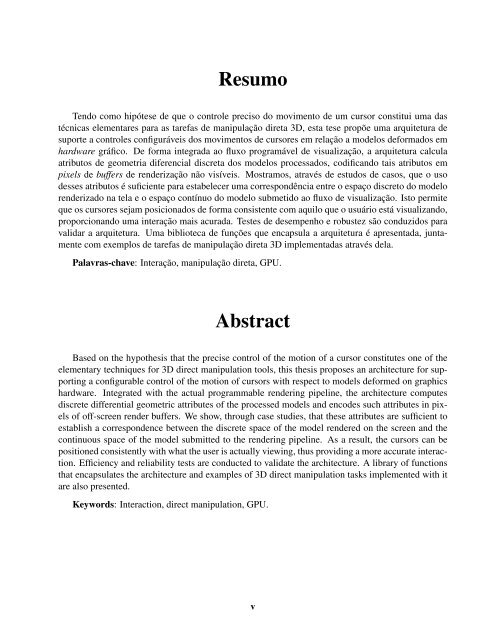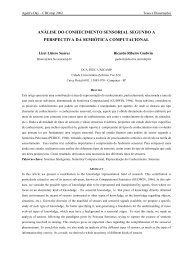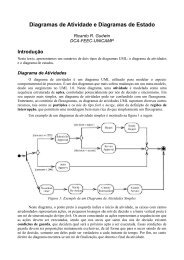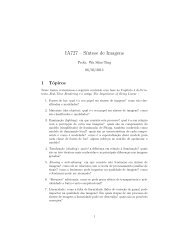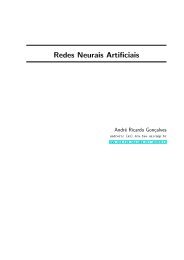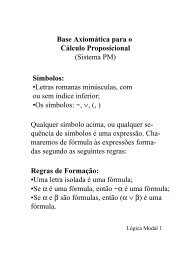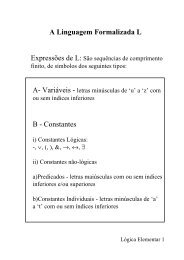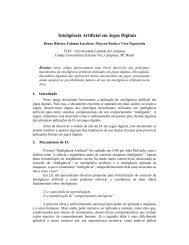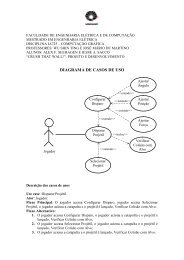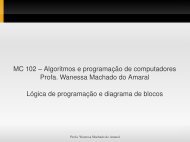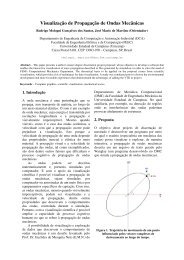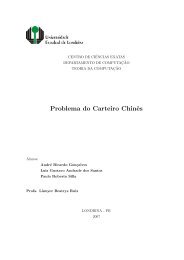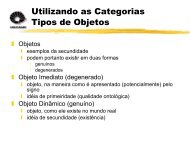Uma Arquitetura de Suporte a Interações 3D ... - DCA - Unicamp
Uma Arquitetura de Suporte a Interações 3D ... - DCA - Unicamp
Uma Arquitetura de Suporte a Interações 3D ... - DCA - Unicamp
You also want an ePaper? Increase the reach of your titles
YUMPU automatically turns print PDFs into web optimized ePapers that Google loves.
Resumo<br />
Tendo como hipótese <strong>de</strong> que o controle preciso do movimento <strong>de</strong> um cursor constitui uma das<br />
técnicas elementares para as tarefas <strong>de</strong> manipulação direta <strong>3D</strong>, esta tese propõe uma arquitetura <strong>de</strong><br />
suporte a controles configuráveis dos movimentos <strong>de</strong> cursores em relação a mo<strong>de</strong>los <strong>de</strong>formados em<br />
hardware gráfico. De forma integrada ao fluxo programável <strong>de</strong> visualização, a arquitetura calcula<br />
atributos <strong>de</strong> geometria diferencial discreta dos mo<strong>de</strong>los processados, codificando tais atributos em<br />
pixels <strong>de</strong> buffers <strong>de</strong> ren<strong>de</strong>rização não visíveis. Mostramos, através <strong>de</strong> estudos <strong>de</strong> casos, que o uso<br />
<strong>de</strong>sses atributos é suficiente para estabelecer uma correspondência entre o espaço discreto do mo<strong>de</strong>lo<br />
ren<strong>de</strong>rizado na tela e o espaço contínuo do mo<strong>de</strong>lo submetido ao fluxo <strong>de</strong> visualização. Isto permite<br />
que os cursores sejam posicionados <strong>de</strong> forma consistente com aquilo que o usuário está visualizando,<br />
proporcionando uma interação mais acurada. Testes <strong>de</strong> <strong>de</strong>sempenho e robustez são conduzidos para<br />
validar a arquitetura. <strong>Uma</strong> biblioteca <strong>de</strong> funções que encapsula a arquitetura é apresentada, juntamente<br />
com exemplos <strong>de</strong> tarefas <strong>de</strong> manipulação direta <strong>3D</strong> implementadas através <strong>de</strong>la.<br />
Palavras-chave: Interação, manipulação direta, GPU.<br />
Abstract<br />
Based on the hypothesis that the precise control of the motion of a cursor constitutes one of the<br />
elementary techniques for <strong>3D</strong> direct manipulation tools, this thesis proposes an architecture for supporting<br />
a configurable control of the motion of cursors with respect to mo<strong>de</strong>ls <strong>de</strong>formed on graphics<br />
hardware. Integrated with the actual programmable ren<strong>de</strong>ring pipeline, the architecture computes<br />
discrete differential geometric attributes of the processed mo<strong>de</strong>ls and enco<strong>de</strong>s such attributes in pixels<br />
of off-screen ren<strong>de</strong>r buffers. We show, through case studies, that these attributes are sufficient to<br />
establish a correspon<strong>de</strong>nce between the discrete space of the mo<strong>de</strong>l ren<strong>de</strong>red on the screen and the<br />
continuous space of the mo<strong>de</strong>l submitted to the ren<strong>de</strong>ring pipeline. As a result, the cursors can be<br />
positioned consistently with what the user is actually viewing, thus providing a more accurate interaction.<br />
Efficiency and reliability tests are conducted to validate the architecture. A library of functions<br />
that encapsulates the architecture and examples of <strong>3D</strong> direct manipulation tasks implemented with it<br />
are also presented.<br />
Keywords: Interaction, direct manipulation, GPU.<br />
v


